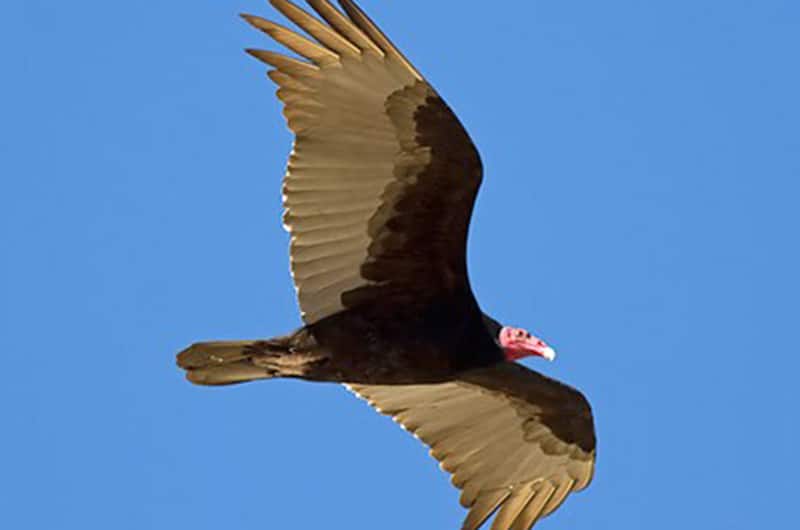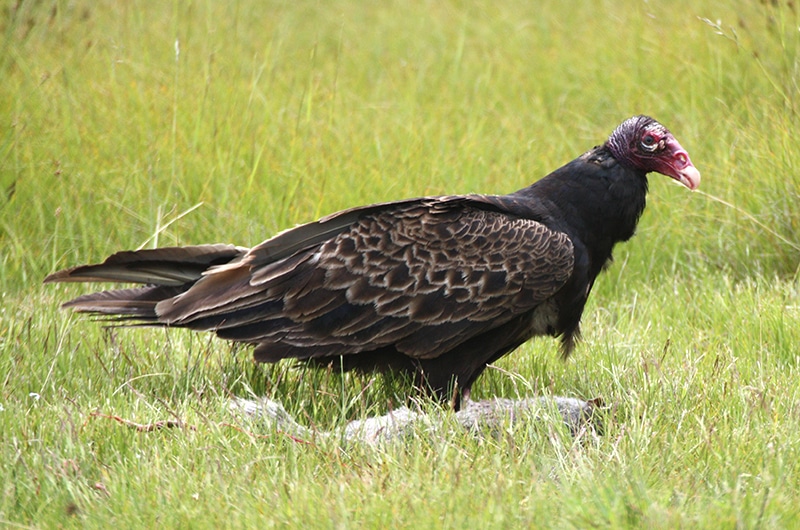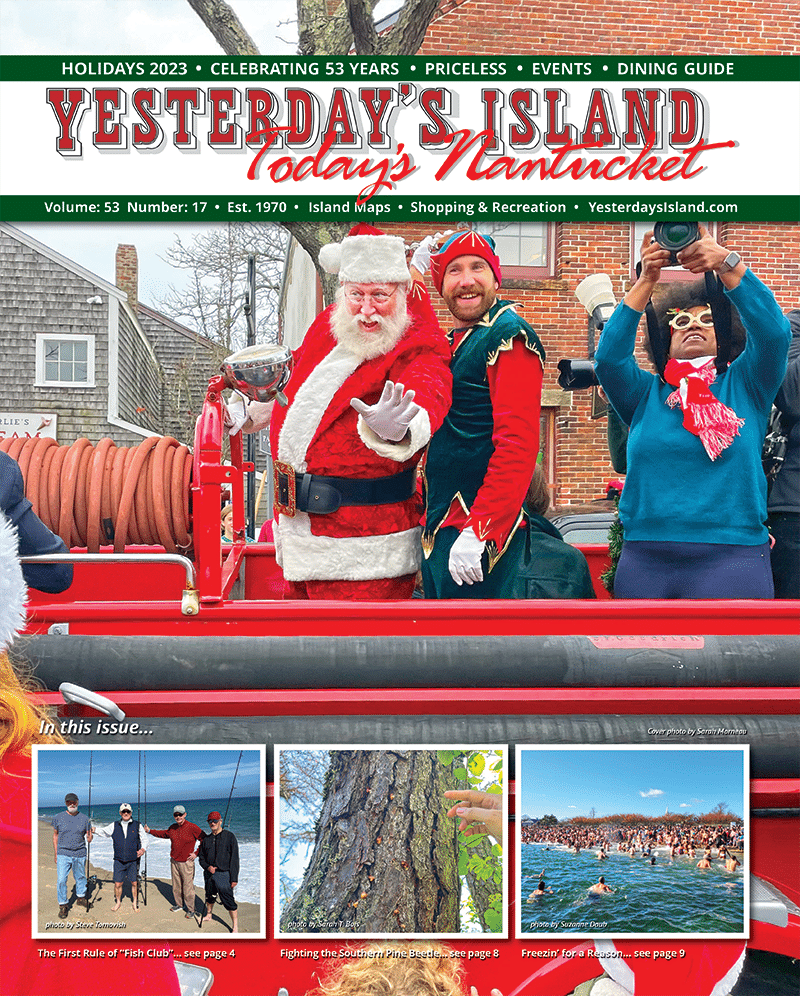by Dr. Sarah T. Bois, Director of Research & Education for the Linda Loring Nature Foundation

Turkey Vultures can easily be distinguished from other soaring birds because of their distinctive “V” shape in the sky. Ungainly on the ground, they are graceful on the wing. They can frequently be seen soaring high above, wings outstretched, rarely beating their wings. They are like drones (or rather drone are like them) keeping an eye to the ground for carrion.
Yes, Turkey Vultures eat dead things. Not just any dead thing, however, Turkey Vultures seek out freshly dead animals such as rabbits, deer, other birds, and even fish. Their palate does not discriminate by species. Because of this specialization, Turkey Vultures are performing an important ecosystem service: they are a natural clean-up crew. Imagine what would happen throughout Nantucket’s conservation properties if no animal ever made use of these deceased creatures.

According to a survey by the Nantucket Maria Mitchell Association, the top roadkill species on island are cottontail rabbits, snakes of various species, and turtles (mostly painted and snapping); all on the menu for our scavenger friends. Now Turkey Vultures are not the only species that provide this service. Others such as crows, seagulls, and some raptors can also be found picking away at roadkill carrion; however, the Turkey Vulture is the only one that exclusively feeds on carrion, the others being more opportunistic. The Turkey Vulture is also the only one with a developed sense of smell and, thus, can sometimes find treasures that others do not.
If you’re lucky enough to find their roost tree, you will note that multiple vultures will roost in the same tree at night (outside of the breeding season). While they may white-wash the surrounding area, without a syrinx (bird voice box) it is not as noisy a place as one might think. Their vocalizations relegated to grunts and hisses.
These beautiful (yeah, I said “beautiful”) birds are highly specialized with form for function. Their “naked” head is free of feathers, causing some to malign this majestic creature for their wrinkly pink heads (the original skin heads). However, a head free of feathers allows this bird to feed on carrion without pesky feathers getting in the way or becoming contaminated.
Young Turkey Vultures have black heads and have been misidentified by some as black vultures. Black Vultures are rare in southern New England. One was seen in several spots on Nantucket in spring of 2011. It hung out with several Turkey Vultures while visiting. Chalk it up to an out-of-town guest visiting for the weekend.
So, while they may be unattractive to some and get a bad reputation, Turkey Vultures are quite gentle creatures that await the death of another creature before making a meal.
Next time we see a Turkey Vulture perched on a branch or soaring in the sky, let’s take a moment to thank them for their service to the island. They are a welcome addition to our year-round population.


